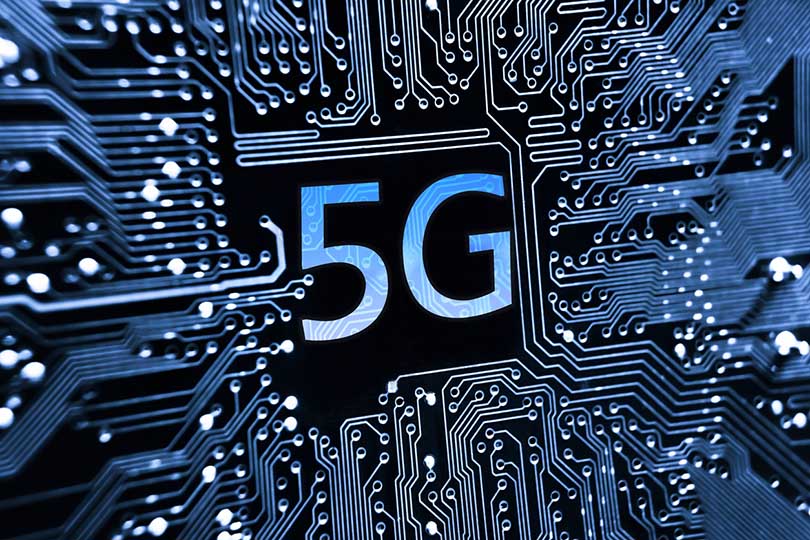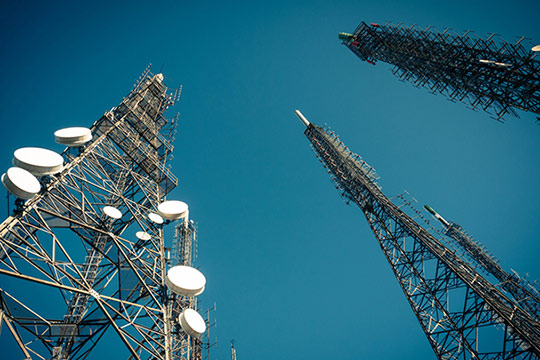TECHNOLOGY FOCUS
5G has triggered a lot of research work and is extensively discussed worldwide in the wireless industry. Based on the new 5G radio access, the 5G protocol and architecture will enable new services like Enhanced Mobile Broadband, Massive Machine Type Communications and Ultra-Reliable and Low Latency Communications. The 5G architecture will not only support the new 5G radio, but also the Evolved LTE system and non-3GPP technologies.
In future a terminal might even be connected via multiple access technologies simultaneously. Huge user groups transmitting infrequent small packets with very low power consumption must be supported as well as user with extremely high data rates and different latency requirements. That means the 5G radio architecture will need to be context/service aware and should also support different level of mobility. Core network architecture requirements include the support of new functions like network slicing, network virtualization and mobile edge computing. New cloud RAN solutions with centralized processing also need to support various fronthaul/backhaul options.
Based on the attendance of the trainer in 3GPP, the teaching also includes updates on the latest status of 5G standardisation.


COURSE CONTENT
This course will go through the 5G Core Networks and the Next Generation 5G Architecture. Details of different architectures will be discussed.
Combine this course with course No 041 5G Radio Access Technology for the best learning effect. Please note that participants attending both course No 041 and course No 042 will benefit from a reduced total course fee. Book the Bundle course.
WHO SHOULD ATTEND
The course is suitable for engineers that already work 2G/3G or 4G systems and are interested in future evolution of the core network towards 5G.
The course is held by a technical expert in the field that is directly involved in 3GPP standardization and provides a hands on up to date background information of the latest trends in this industry. Therefore it is suitable for all kind of engineers from research, development, planning, deployment and operation as well as executives, managers and system architects.
Pre-existing knowledge of the 5G Radio Access will deepen the understanding of the technical details. Therefore attendance of the preceding course No 041 5G Radio Access Technology is recommended.

Due to Covid-19, and the uncertain travel recommendations for Autumn 2020, it is decided that this course is planned to run Online only. The daily schedule will be adjusted to fit remote training, with less hours per day divided into extra days. Make a preliminary booking and we will keep you updated.
Day 1
Introduction 5G Core Networks
- Evolution of Architectures and Evolved Packet Core
- Requirements on 5G Core Network
- Control and User Plane Separation (CUPS)
- Overview Service Based vs. Reference Point Based 5G Architecture
Architecture Evolution from EPC to 5GC
- Standalone vs. Non-Standalone Radio Access Network
- Dual Connectivity with eLTE or 5G as Master Node
- Impact on Interfaces and Mobility
Key Network Technologies
- Network Function Virtualisation and Sofware Defined Networks
- Network Slicing and End-to-End Quality of Service
- Multi-Connectivity and Multi-RAT Traffic Control
- Context Aware Networks
- 5GC Standardisation in 5G Phase I and Phase II
5G Core Network Details
- Entities and Functional Split
(AMF, SMF, UPF, AUSF, NNSF, NEF, NRF, PCF, UDM, AF) - Initial Attach Procedure
- Handling of Network Functions
- Entities and Functional Split
- Roaming and Data Routing
- 5GC Interworking and Migration from EPC
- Non-3GPP Access (e.g. WiFi, Satellite)
5G Quality of Service Architecture
- Overview QoS Architecture
- QoS Flow Concept and Radio Bearer
- Service Differentiation, Signalling Flow and QoS Attributes
- Standardized 5G QoS Identifiers and Packet Classification
- Pre-Authorized QoS, Reflective QoS and Per Packet based QoS
Day 2
Network Slicing
- Overview Network Slicing Architecture
- Use Cases and Slice Selection
- Resource Multiplexing and Isolation
- RAN Support of Slicing and RAN Sharing
- Flexible Allocation of Network Functions
5G Applications
- 5GC Services e.g. PWS, SMS, Mission Critical and Priority Services
- Voice and Video over 5GC incl. RAN Assisted Codec Adaptation
5G RAN Control Plane Architecture
- Overview Control and User Plane
- Radio Resource Control
- Acquisition of System Information
- Initial Access and RRC Connection Control
- New RRC Inactive State and RAN Paging / Notification
- Dual Connectivity Control Plane Aspects
5G RAN User Plane Architecture
- SDAP-, PDCP-, RLC-, MAC-Layer Functionality
- Signalling Radio Bearer and Data Radio Bearer
- RLC transmission modes
- MAC Multiplexing and Control Elements
- Dual Connectivity User Plane Aspects
Interfaces 5G Core / RAN (N2/N3 IF)
- NR and Xn Interfaces and Application Protocols
- Control and User Plane Protocol Architecture GTP/UDP/IP and SCTP/UDP/IP Protocol
RAN Internal Architecture and Development Options
- Centralized and Distributed Units and Remote Radio Heads
- Fronthaul Interfaces F1 / F2 and Standardisation Thereof
- Control- / User Plane Split of Centralized Unit (E1 Interface)
- RAN Deployment Options (C-RAN, Centralized RRM and/or UP)
5G NR RAN Procedures
- Establishment of LTE- NR Dual Connectivity
- Uplink and Downlink Handover Procedure
- Contention based and Non-Contention based RACH Procedure
Said about the course from previous course participants:
"Everything is covered, from design start to tape out."
"Hands-on experience of teacher, ability to get empirical feedback." '
"I found what I expected, teacher was flexible to the group and covered the most interesting topics of the group."
"A lot of interaction and discussions among the participants."
"Valuable add-ons to the course from everybody's background and filed of expertise."
See interesting links to white papers co-authored by Mr Eiko Seidel, related to the course content: 5G Radio Protocol and Architecture
http://www.nomor.de/home/technology/3gpp-newsletter/2017-03%3A-3gpp-5g-ran-study-completed
http://www.nomor.de/home/technology/3gpp-newsletter/2017-01:-3gpp-5g-ran-adhoc-ran-functional-split

